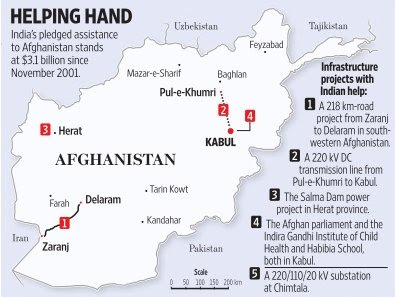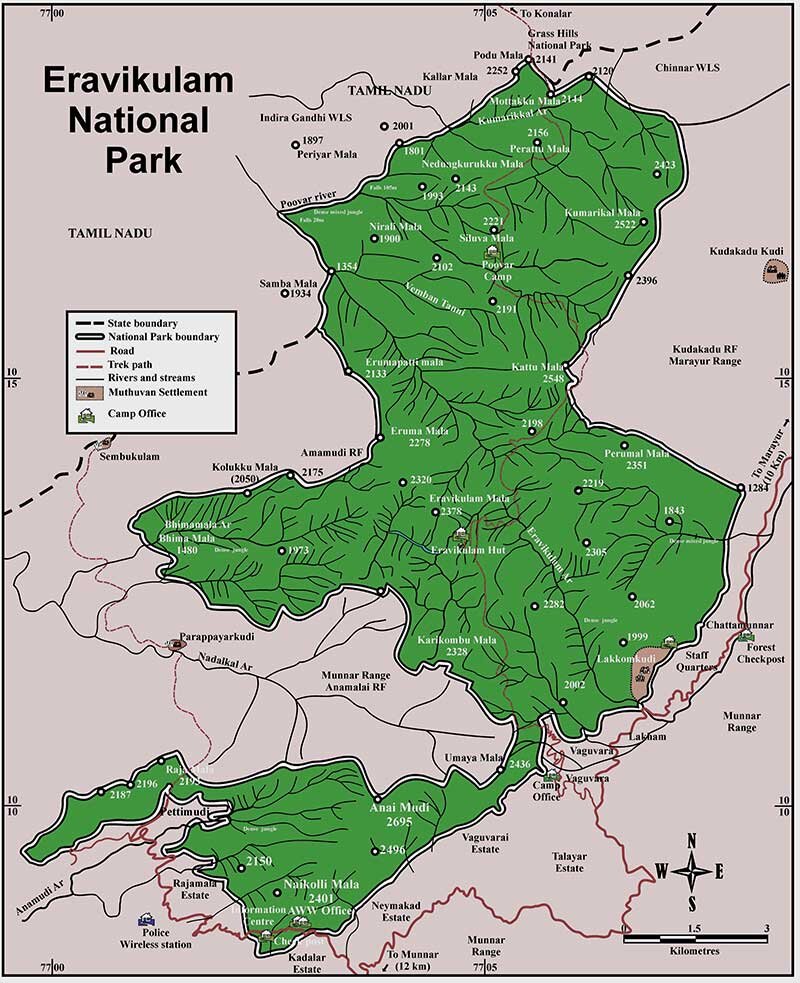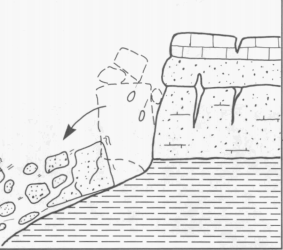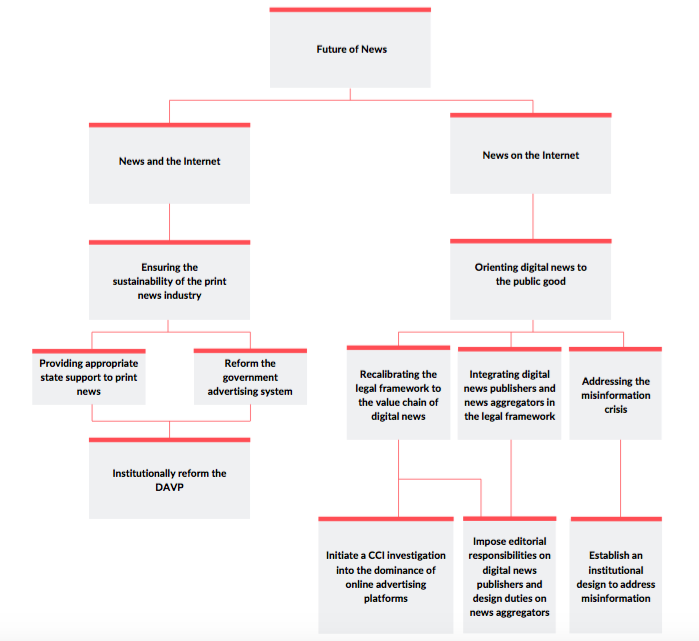International Relations
Loya Jirga: Grand Assembly of Afghanistan
Why in News
Recently, a three-day Loya Jirga-grand assembly has been called in Afghanistan to decide on freeing about 400 Taliban fighters convicted for serious crimes including murder and abductions.
Loya Jirga
- It is a mass national gathering that brings together representatives from the various ethnic, religious, and tribal communities in Afghanistan.
- It is a highly respected centuries-old consultative body that has been convened at times of national crisis or to settle national issues.
- According to the Afghan Constitution, a Loya Jirga is considered the highest expression of the Afghan people. It is not an official decision-making body and its decisions are not legally binding.
- However, the Loya Jirga's decision is seen as final, with the president and parliament expected to respect the ruling.
Key Points
- Need for Convening Loya Jirga:
- The Loya Jirga has been convened after the Afghanistan President refused to release the Taliban prisoners. This threatened the derailment of intra-Afghan talks, tentatively scheduled for 10th August 2020 in Doha.
- The Taliban has also threatened of more bloodshed if the prisoners are not released.
- The USA believes that the talks between the Afghanistan government and Taliban will lead to reduction of violence and direct talks, resulting in a peace agreement and an end to the war in Afghanistan.
- The Loya Jirga has been convened after the Afghanistan President refused to release the Taliban prisoners. This threatened the derailment of intra-Afghan talks, tentatively scheduled for 10th August 2020 in Doha.
- Background:
- The prisoner exchanges are part of the agreements signed by the USA and Taliban and the USA and Afghanistan government in February 2020.
- However, these were delayed for several months, and the intra-Afghan talks that were scheduled on 10th March had to be put off. Few argue that the current Afghanistan President Ashraf Ghani is deliberately delaying peace talks with the Taliban to retain power because it is speculated that negotiations could seek a neutral interim government that may cost Mr.Ghani his post.
- The USA announced to withdraw its forces and reduced its strength to about 8000, after pushing for the Afghanistan government to release the Taliban prisoners, and for the Taliban to release Afghan soldiers and civilians in its custody.
- Over the past few weeks, the USA government has been keen to speed up the Taliban-Afghan reconciliation process, with an eye on the November 2020 Presidential elections.
- India’s Interests in Afghanistan:
- India has a major stake in the stability of Afghanistan. India has invested considerable resources in Afghanistan's development. E.g. the Afghan Parliament, the Zaranj-Delaram Highway, Afghanistan-India Friendship Dam (Salma Dam) among others.
- India favours the continuation of the current Afghanistan government in power, which it considers a strategic asset vis-à-vis Pakistan.
- An increased political and military role for the Taliban and the expansion of its territorial control should be of great concern to India since the Taliban is widely believed to be a protégé of Pakistan.
- Afghanistan is the gateway to Central Asia.
- Withdrawal of US troops could result in the breeding of the fertile ground for various anti-India terrorist outfits like Lashkar-e-Taiba or Jaish-e-Mohammed.
Way Forward
- India should support any genuine peace process in Afghanistan. However, the peace process in Afghanistan is one-sided and pushed by the U.S.A. and Pakistan.
- India should not recognise or publicly engage the Taliban until it recognises the Afghanistan government.
Biodiversity & Environment
Landslide near Eravikulam National Park
Why in News
Recently, landslides have been reported at the Nayamakkad tea estate at Pettimudy which is located about 30 km from Munnar, adjacent to the Eravikulam National Park (ENP), Kerala.
Key Points
- Features of ENP:
- It is located in the High Ranges (Kannan Devan Hills) of the Southern Western Ghats in the Devikulam Taluk of Idukki District, Kerala.
- It spreads over an area of 97 square km and hosts South India's highest peak, Anamudi (2695 m), in its southern area.
- The Rajamalai region of the park stays open to the public for tourism.
- History:
- The Government of Kerala acquired the area from the Kannan Devan Hills Produce Company under the Kannan Devan Hill Produce (Resumption of lands) Act 1971.
- It was declared as Eravikulam-Rajamala Wildlife Sanctuary in 1975 and was elevated to the status of a National Park in 1978.
- Topography:
- The main body of the park comprises a high rolling plateau (plateau at different elevation or with varying heights) with a base elevation of about 2000 m from mean sea level.
- Three major types of plant communities found in the park are: Grasslands, Shrub Land and Shola Forests (mosaic of montane evergreen forests and grasslands).
- The park represents the largest and least disturbed stretch of unique Montane Shola-Grassland vegetation in the Western Ghats.
- Flora:
- It houses the special Neelakurinji flowers (Strobilanthes kunthianam) that bloom once every 12 years and the next sighting is expected to be in 2030.
- Apart from that, it has rare terrestrial and epiphytic orchids, wild balsams, etc.
- An epiphyte is an organism that grows on the surface of a plant and derives its moisture and nutrients from the air, rain, water or from debris accumulating around it.
- Fauna:
- The park holds the largest viable population of the endangered Nilgiri Tahr (Nilgiritragus hylocrius).
- It has other little known fauna such as Nilgiri Marten, Ruddy Mongoose, Small Clawed Otter, Dusky Striped Squirrel, etc.
- Significance:
- It is regionally important as a catchment area for both east (tributaries of River Pambar) and west (tributaries of River Periyar and Chalakkudy) flowing rivers.
- Locally, it is important for maintaining the climate and providing drinking water to the surrounding estates and for irrigation.
- Proximity: The park is in continuity with the neighboring Chinnar Wildlife Sanctuary, Anamudi Shola National Park, Pampadum Shola National Park, Kurinjimala Sanctuary and Anamalai Tiger Reserve.
- A landslide is defined as the movement of a mass of rock, debris or earth down a slope. Landslides are a type of mass wasting (a geomorphic process) which denotes any down-slope movement of soil and rock under the direct influence of gravity.
- Causes: Slow weathering of rocks as well as soil erosion, earthquakes and volcanic activity.
- Continent-wise, Asia suffers the maximum damages/losses due to landslides and within that, South-Asian nations are the worst sufferers including India which is one of the worst affected by landslides.
Governance
Anganwadi Services
Why in News
Right to Food Campaign has given a memorandum to the Minister for Women and Child Development to resume provision of hot-cooked meals and ensure implementation of anganwadi services.
Key Points
- Recommendations:
- The memorandum suggested that anganwadi services (like community-managed growth monitoring, supplementary nutrition, immunisation, etc.) should be delivered either within the day care centres or at the houses of the beneficiaries.
- It also recommended a comprehensive package of cooked food and dry rations.
- It also sought protective gear for frontline health workers such as Accredited Social Health Activist (ASHA) and anganwadi workers.
- Background: Following the nationwide lockdown on March 25, the Integrated Child Development Scheme (ICDS) implemented at anganwadis was discontinued.
- It impacted nearly 14 lakh anganwadis and over 8 crore beneficiaries (children under six years and pregnant women and lactating mothers)
- The Ministry of Women and Child Development asked State governments and Union Territories to extend food security allowance to each beneficiary.
- According to the POSHAN COVID-19 Monitoring report for India compiled in June 2020, by UNICEF, World Food Programme and the World Bank, 10 of the 14 most populous States did not conduct community management of acutely malnourished children and eight States were unable to measure growth parameters of children under six years.
Right to Food
- The Right to Food is recognized as a part of Right to Life and Personal Liberty (Article 21) by the National Human Rights Commission.
- The Directive Principles of the State Policy in Article 39a, requires the State to direct its policies towards securing that all its citizens have the right to an adequate means of livelihood.
- The National Food Security Act (NFSA), 2013, gives the right to food but it is not universal.
- It legally entitles up to 75% of the rural population and 50% of the urban population to receive subsidized food grains under the Targeted Public Distribution System.
- In People's Union for Civil Liberties v. Union of India & Others case (2001), the Supreme Court explicitly established a constitutional human right to food and determined a basic nutritional floor for India's impoverished millions.
Anganwadi
- Anganwadi is a centrally sponsored scheme implemented by the States / UTs which serves as a rural child and maternal care centre in India.
- It was started by the Government of India In 1975 as part of the Integrated Child Development Services program to combat child hunger and malnutrition.
- Anganwadi centres provide a package of six services: supplementary nutrition, pre-school non-formal education, immunisation, health check-up, nutrition and health education, and referral services.
- The beneficiaries under the Anganwadi Services Scheme are identified on the basis of Aadhaar.
Way Forward
- At a time when India is battling with Covid-19 it must take into consideration the impact of the pandemic on children and higher food prices in pandemic, and ensure accessibility to nutrition, growth monitoring and health services to every beneficiary.
Governance
Report on Future of News in India: Vidhi
Why in News
Recently, the Vidhi Centre for Legal Policy (Delhi based independent think-tank) released a report examining the future of news in India.
Key Points
- Findings:
- The worsening economic health of print journalism threatens its ability to credibly inform the public and act as an institutional check upon power.
- The environment of digital news operates in a vacuum of regulation. The emergence of a post-truth paradigm in public communications and the widespread proliferation of misinformation are barriers to realising the benefits of digital news distribution.
- Post-truth includes circumstances in which objective facts are less influential in shaping public opinion than appeals to emotion and personal belief.
- Recommendations: The report has drawn a roadmap of legal reforms to facilitate the transition of high-quality print journalism into the era of digital communications in a manner that benefits the public good.
- Checking the Dominance of Online Advertising Platforms:
- The advertisement-revenue model for digital news may be displaying indications of market failure.
- In an advertising-revenue model, the online companies publish free content that drives hundreds, thousands or millions of visitors to the site on a monthly basis. Advertisers pay the online companies to get in front of these visitors, this helps Businesses generate their revenue from the fees advertisers pay for this access.
- To orient the market for digital news towards the public good, the role and practices of online advertising platforms must be systematically studied by a specialised authority.
- The report has recommended the Competition Commission of India to investigate the dominance of online advertising platforms.
- The advertisement-revenue model for digital news may be displaying indications of market failure.
- Enacting Comprehensive Measures to Address Misinformation:
- It suggests a range of legislative, co-regulatory and voluntary measures which provide an integrated framework to prevent the spread of misinformation and enhance reader literacy. Example:
- Development of industry standards to identify misinformation.
- Use of analytics to identify patterns of misinformation, etc.
- It suggests a range of legislative, co-regulatory and voluntary measures which provide an integrated framework to prevent the spread of misinformation and enhance reader literacy. Example:
- Appropriate Responsibilities on Digital News Entities:
- The report calls to fill the legal vacuum for digital news in a manner which is sensitive to the nuances of online discourse.
- It recommends granting limited powers to the Press Council of India, in conjunction with a voluntary registration procedure and the development of a brief, accessible code of conduct as a mechanism for the imposition of editorial responsibility.
- The role of online platforms in the distribution of news should be addressed through targeted interventions based on the design aspects of such platforms.
- Checking the Dominance of Online Advertising Platforms:
Agriculture
Food System Vision 2050 Prize: Rockefeller Foundation
Why in News
The Rockefeller Foundation has selected Naandi Foundation (a Hyderabad based non-profit organisation), as one of the top 10 ‘Visionaries’ in the world for the Food System Vision 2050 Prize.
- Naandi was recognised for its Arakunomics model.
Key Points
- The Food System Vision Prize:
- It was launched by the USA-based ‘The Rockefeller Foundation’, in partnership with the other two organisations - SecondMuse and OpenIDEO- in 2019.
- It is an invitation for organizations across the globe to develop a Vision of the regenerative and nourishing food system that they aspire to create by the year 2050.
- Food System Vision is a story about the future that addresses the following six interconnected themes: Environment, Diets, Economics, Culture, Technology and Policy.
- The notion is that by transforming food systems, following challenges can be addressed:
- A global population approaching 10 billion,
- Greenhouse gasses changing the climate,
- Pollution poisoning soil, air, and water.
- USD 2 million will be distributed to the Top Visionaries, who will be eligible to receive a prize of USD 2,00,000 each.
- Naandi Foundation (Arakunomics):
- The organisation was recognised for the application of Arakunomics model in regions of Araku (Andhra Pradesh), Wardha (Maharashtra) and New Delhi, leading to the Food Vision 2050 that follows an “ABCDEFGH” framework centring on: Agriculture, Biology, Compost, Decentralised decision-making, Entrepreneurs, Families, Global Markets, and ‘Headstands (implying innovation)’.
- Arakunomics is a new integrated economic model that ensures profits for farmers, quality for consumers through regenerative agriculture.
- It is based on work with tribal farmers in Araku for nearly 20 years.
- This economic model is a tribute to the tribal farmers of Araku region for the world class coffee produced and launched in Paris in 2017, as well as for the high carbon landscape transformation they did in over 955 villages, thereby planting 25 million trees.
- Arakunomics success in Araku led to Naandi replicating the model to support the livelihoods of farming communities in the villages of Wardha – infamous for agrarian distress, as well as later in New Delhi, as part of an Urban Farms Co programme.
- Naandi hopes to expand its “food-print” by creating thousands of farm livelihoods by transforming their agriculture over one million acres spread across India.
- Rockefeller Foundation will release USD 1,50,000 at present and the balance USD 50,000 after a three-month accelerator programme that is intended to help Naandi realise its vision.
Regenerative Agriculture
- “Regenerative Agriculture” describes farming and grazing practices that, among other benefits, reverse climate change by rebuilding soil organic matter and restoring degraded soil biodiversity – resulting in both carbon drawdown and improving the water cycle.
- The key to regenerative agriculture is that it not only “does no harm” to the land but actually improves it, using technologies that regenerate and revitalize the soil and the environment.
- Regenerative agriculture leads to healthy soil, capable of producing high quality, nutrient dense food while simultaneously improving, rather than degrading land, and ultimately leading to productive farms and healthy communities and economies.
- It is dynamic and holistic, incorporating permaculture (sustainable and self-sufficient agricultural ecosystems) and organic farming practices, including conservation tillage, cover crops, crop rotation, composting, mobile animal shelters and pasture cropping, to increase food production, farmers’ income and especially, topsoil.
- It has been promoted to counter loss of the world’s fertile soil and biodiversity, along with the loss of indigenous seeds and knowledge.
Governance
TRIFED’s Digitisation Drive
Why in News
The Tribal Cooperative Marketing Development Federation of India (TRIFED) celebrated its 33rd Foundation Day on 6th August 2020 and launched its own virtual office on the same day.
Key Points
- Virtual Office:
- It has 81 online workstations and 100 additional converging State and agency workstations that will help the team members of TRIFED in working with their partners across the country on mission-mode towards bringing the tribal people closer to mainstream development.
- To gauge the level of employee engagement and streamline their efforts, an Employee Engagement and Work Distribution Matrix with Dashboard Links has also been launched.
- Reasons:
- After the Covid-19 pandemic, every aspect like shopping, banking, working, etc. has gone online and it has been observed that the trend has increased even after relaxations of lockdowns.
- All these organisational initiatives are a part of TRIFED’s ambitious all-encompassing digitisation drive to promote tribal commerce and map and link its village-based tribal producers and artisans to national and international markets by setting up state of art e-platforms benchmarked to international standards.
Tribal Cooperative Marketing Development Federation of India
- Formation:
- TRIFED came into existence in 1987 as the national nodal agency under the aegis of the Ministry of Tribal Affairs.
- It was registered under the then Multi-State Cooperative Societies Act, 1984.
- It started its operations in 1988 with its head office in New Delhi.
- Objectives: Socio-economic development of tribal people, promotion of economic welfare, empowerment of tribal people with knowledge, tools and information and their capacity building.
- Functions: It mainly undertakes two functions which are Minor Forest Produce (MFP) Development and Retail Marketing and Development.
- Initiatives and Involvement:
- It started the procurement and marketing of tribal art and craft items through its first retail outlet called TRIBES INDIA in New Delhi in 1999.
- It has organised the Van Dhan Internship Programme, to enhance the output of the Van Dhan Yojana.
- It has also launched a transformational Tech For Tribals program in partnership with Institutes of National Importance (INIs) to develop Tribal entrepreneurship.
- TRIFOOD Scheme is a joint initiative of the Ministry of Food Processing Industry, Ministry of Tribal Affairs and TRIFED and it promotes value addition to MFP.
- Mechanism for Marketing of MFP through Minimum Support Price (MSP) and Development of Value Chain for MFP was implemented in 2013 to ensure fair returns to forest dwelling Scheduled Tribes (STs) and other traditional forest dwellers.
- It has organized a Webinar on Covid-19 Response in collaboration with the United Nations Children’s Fund (UNICEF) and the World Health Organisation (WHO).
- The webinar was organised for virtual training of TRIFED Trainers and Self Help Groups (SHGs) on basic orientation on Covid-19 response and key preventive measures to ensure that tribal gatherers carry on their work safely.
Important Facts For Prelims
Rashtriya Swachhata Kendra
Why in News
The Prime Minister will inaugurate Rashtriya Swachhata Kendra (RSK) on 8th August, 2020.
Key Points
- RSK is an interactive experience centre on the Swachh Bharat Mission.
- It will introduce future generations to its successful journey as the world’s largest behaviour change campaign.
- It will showcase the core elements of the mission and anecdotes on the journey of the country from Satyagraha to Swachchagrah.
- It will impart information, awareness and education on Swachhata (sanitation) and related aspects.
- The installations at RSK will include audio visual immersive shows, interactive LED panels, hologram boxes, interactive games etc.
- Rashtriya Swachhata Kendra (RSK) was first announced on the occasion of the centenary celebrations of Mahatma Gandhi's Champaran Satyagraha.
Swachh Bharat Mission
- Swachh Bharat Mission (SBM) or Clean India Mission is a country-wide sanitation campaign launched on 2nd October, 2014.
- Objectives: Elimination of open defecation, eradication of Manual Scavenging, modern and scientific municipal solid waste management and bring behavioral change regarding healthy sanitation practices.
- It encompasses two missions:
- Swachh Bharat Mission (Urban): Implemented by the Ministry of Housing and Urban Affairs (M/o HUA) for urban areas.
- Swachh Bharat Mission-Urban (SBM-U) recently achieved its target of creating Urban India Open Defecation Free (ODF)
- Swachh Bharat Mission (Grammen): Implemented by the Ministry of Drinking Water and Sanitation (M/o DWS) for rural areas.
- Recently, SMB(G) completed its Phase-I and its Phase-II was launched.
- Swachh Bharat Mission (G) Phase-I: The rural sanitation coverage in the country has increased from 38.7% to 100%.
- More than 10 crore individual toilets have been constructed since the launch of the mission.
- All rural areas in all the States have declared themselves ODF as on 2nd October, 2019.
- Swachh Bharat Mission (Urban): Implemented by the Ministry of Housing and Urban Affairs (M/o HUA) for urban areas.
Way Forward
- Although the goal of making India Open Defecation Free and enhancing Solid and Liquid Waste Management mechanisms has been achieved, the work on sanitation and behavioural changes requires continued efforts to sustain the gains made during the first phase of the campaign.
- It is imperative that the phase-II of SBM focusses on convergence between different verticals of financing and different schemes of Central and State governments.
Important Facts For Prelims
First Kisan Rail
Why in News
The Indian Railways has introduced the first “Kisan Rail” from Devlali (Maharashtra) to Danapur (Bihar).
- The Centre had announced plans of starting special parcel trains called ‘Kisan Rail’ in the Budget 2020-21.
Key Points
- Kisan Rails are the first ever multi commodity trains.
- Earlier, Indian Railways had run single commodity special trains like Banana Specials etc.
- These trains with refrigerated coaches will help in bringing perishable agricultural products like vegetables, fruits to the market in a short period of time.
- These will ensure that agro products reach from one corner to another corner of the country.
- These trains are a step towards realising the goal of doubling farmers’ incomes by 2022.
- These are expected to be a great help to the farmers, as freight of these trains will be charged as per parcel tariff of normal trains.
- The Devlai-Danapur train (a weekly service) is expected to reduce transportation costs by Rs. 1000 per tonne compared with roadways and reduce travel time by around 15 hours.
- Aggressive marketing is being done with local farmers, loaders, Agriculture Produce Market Committee (APMC) and individuals.
- Any farmer or any other interested party can directly book their consignments in trains, without any lower limit on the size of consignment.
- The consignment can be as small as 50-100 kgs, and can be booked from any stopping station to any other stopping station – giving full flexibility.
- Regarding loss/damage of products for any reason, Railways already have a well-established claim/compensation system – through which the party can get compensation for its losses.








